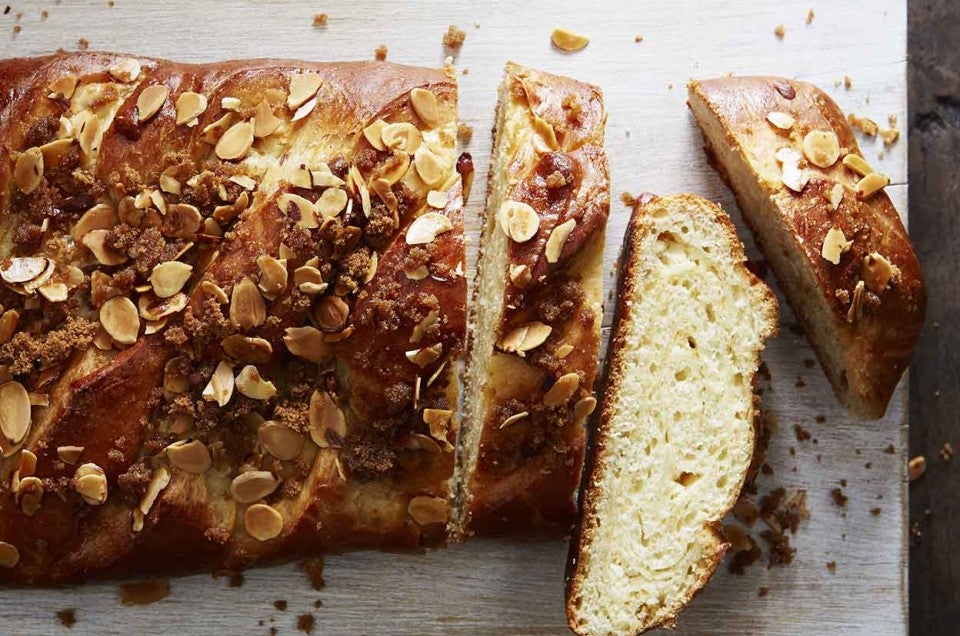Sweet Cheese Coffee Bread
The following cake, somewhat reminiscent of a cheese Danish, goes extremely well with coffee. Slice it no more than 1" thick, and serve it with fresh fruit, scrambled eggs, or other savory foods.

The following cake, somewhat reminiscent of a cheese Danish, goes extremely well with coffee. Slice it no more than 1" thick, and serve it with fresh fruit, scrambled eggs, or other savory foods.


Weigh your flour; or measure it by gently spooning it into a cup, then sweeping off any excess. In a large mixing bowl, combine all of the dough ingredients, mixing — by hand, mixer, or bread machine — until the dough is smooth and supple, but a bit tacky.
Transfer the dough to a lightly oiled bowl, cover the bowl with plastic wrap, and refrigerate it overnight.
To make the filling: Combine all of the filling ingredients except the ginger, beating until smooth. Refrigerate until ready to use.
To make the topping: In a small cup, mix together the remaining egg, brown sugar, and vanilla. Set aside.
To assemble the coffee bread: Transfer the dough to a lightly floured work surface, and roll it into a 1/4" to 1/2" thick rectangle, about 16" x 14". The cold dough will be pleasant to work with — very solid, but soft and pliable.
Spread the filling on the dough, leaving a half-inch border around the edge.
Sprinkle the ginger, if you're using it, atop the filling.
Tucking in the two short edges (this will keep the filling inside as it bakes), and starting with a long edge, roll the dough up like a jelly roll.
Seal the side seam, and place the roll, seam-side down, on a lightly greased or parchment-lined baking sheet, shaping it into a horseshoe-shape.
Make about 6 diagonal slashes in the top of the dough (this will allow the steam from the filling to escape), then brush the topping all over the dough.
Sprinkle with the almonds.
Cover the loaf with lightly greased plastic wrap or a dough-rising cover, and set it aside to rise for 2 hours or so; it'll become somewhat puffy, but really won't rise very much.
Bake the bread in a preheated 350°F oven 35 to 40 minutes, or until it's golden brown.
Remove it from the oven, cool to lukewarm, slice, and serve.
Store, well-wrapped, for 3 days at room temperature, or freeze for up to 3 months.

View our privacy policy

